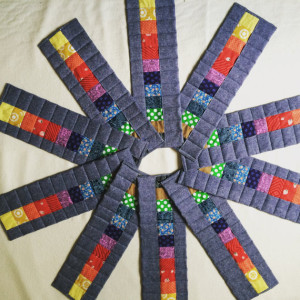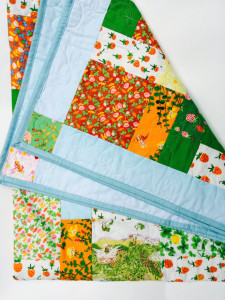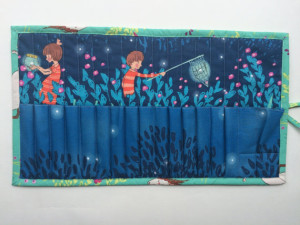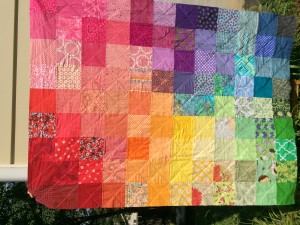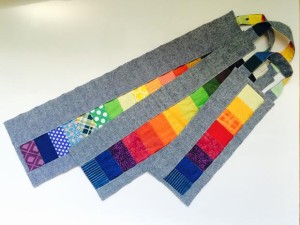
Breathe, Listen, Watch, Transcribe
The Art of Pedagogical
Stories, Part One: First Day of School Jitters
I recently
got word that one of the first graders I am going to teach in the fall was
feeling nervous, full of questions, and anxious about starting school. And as so often happens with me when I hear a
child is having some sort of issue, a story popped out. Sometimes I share these stories with the
children, sometimes I don’t. Sometimes
they are for me to learn from and gain insights into the situation. Other times, like this story, they are clearly
written for the child in question and need to be shared.
This is an
example of a “pedagogical story”—a story designed to address an emotional,
behavioral, academic, or social issue that a student or class may be
experiencing. Pedagogical stories are
wonderfully gentle interventions to meet children of all ages, especially younger
ones, at their level—the level of wide-open imaginations and open hearts. Such stories have the ability to work their
way right into the hearts and minds of children and give the children the power
or permission to transform or resolve whatever the issue is for themselves. Pedagogical stories honor the child’s experiences,
concerns, and struggles. And since
children (and many adults who strive to keep this ability alive) think in
pictures, the language of the story—the language of the heart and imagination
is an ideal way to effectively reassure, inspire, comfort, redirect, and heal many
of the concerns of children. They are a
tool that can be used by parents and teachers alike. And while a story might be written with one particular
child in mind, it is often the case that if one child is experiencing a concern
most likely others in the class are as well. So some stories are told for one, others for
the group. This story, a simple yarn
about a bear cub and a bear, was written for one.
Some parents
and teachers think pedagogical stories are nice for those that can write
them. Some believe they can’t “make up
such stories.” They’ll say, “Oh well,
you’re a writer, Joseph, it’s easy for you.
I just can’t think of what to write.”
To these
concerns I would say: let the story be born from your love for the child. Really.
Let it arise from the heart of the matter. There is no need to “make up” a story. The story is living in the situation. It just takes a little attention, a little
care and effort to think of the issue in terms of an image and let the story
blossom from that. Most of the images
and stories will come from nature—animals, birds, butterflies, trees—let the
language of nature clothe the particular issue and let this happen freely. Of course, one can always pray before writing—for
guidance and insight. One can simply
start writing, as I do, without any thought or plan—well, there’s a plan to
help comfort a child if I am writing a pedagogical story. But in general, for me, the stories are
there, waiting to be harvested from the Garden of Inspiration, plucked from the
Tree of Life, gathered from the Fields of Dreams; netted from the Lake of
Wonders. And while this may sound
flowery, it’s my experience.
Most
stories are like most children (and adults)—they are aching to be seen. And they will open themselves before you if
you take the time to quiet yourself enough to listen and watch. If I “try” to write a story, it will come, but
most often, it will crawl from the pen painstakingly and be crippled in some
way. And if it does come through my
force, it will come out only to go hide somewhere in the corner of the room
perhaps forever. If I approach the issue
a child is having with an open, compassionate heart, a heart of understanding
and knowledge of where children “are at,” then the stories just come. You can always edit and revise the initial
story—prune, weed out repetitive words and so on, after the story sprouts, but
that’s for later. For now, take a deep
breath. Try it.
Think of a
child you know and love who is experiencing some sort of concern. It might be a little one, so to speak, and
the story might be three lines long—just an image for the child to hold onto
that honors them and gives them hope. It
might be more involved and take many days to write and tell. But try it.
Your heart will be in the right place, so you cannot make a mistake
here. Of course, I rarely, rarely, rarely
mention a particular child’s name in a pedagogical story—in fact; I often
change the child to an animal, or change the gender of the child, age, etc…that’s
really the only big guideline as I see it.
The rest will come when you are even a little bit open and willing to
sit down a minute (or walk, some stories come to those who move). So breathe through the experience; think of a
child you know who is experiencing an issue of some sort and let a story approach
you and reveal itself to you—you just listen and write it down—that’s really
the formula for the initial story—breathe, listen, watch, transcribe.
And then
share this gift to the child—tell it by heart, and know you have truly touched
the heart, mind, and soul of a child.
Here’s the
story that came for one of my first graders:
Keepers of the Castle
Once upon a
time a wonderfully Bright and Kind Bear Cub stood at the edge of a Great
Forest. Inside the woods a path towards
an Enchanted Castle wove through the trees like a shining, golden river. Music and laughter could be heard in the
distance. The Bright and Kind Bear Cub
wanted so badly to step into the forest and onto the path, but she was nervous.
“What will
it be like in there?” she thought. “Will
I have fun?” “Will anyone be mean to
me?” “What will I learn there?” “Will the Keepers of the Castle be nice and
friendly?” “Where will I sit at the
table?” “Will I be next to my
friends?” “What if I make mistakes?”
“What if I say something silly?”
As all of
these questions, and more like them, fluttered through her mind and stomach
like so many butterflies, she suddenly heard a low, but friendly growl coming
from the forest. Then she heard huge
paws padding towards her through the underbrush. A crack of twigs and branches shot off like
fireworks and there in front of her stood an Enormous Black Bear.
“Oh dear,”
said the Bright and Kind Bear Cub, “Who are you?”
“I am one of
the Keepers of the Enchanted Castle,” said the Big, Black Bear, “I have come to
answer your questions and invite you to join us. We need other Keepers. Kind Keepers, Bright Keepers, Keepers Who
Care about Themselves and Others. We need Keepers like You.”
“Me?” She
said surprised.
“Yes you,”
he said, “I can feel your kindness all the way from inside my den. Now, are you ready to have your questions
answered, and are you ready for a wonderful adventure?”
“Y-yes,”
said the Bright and Kind Bear Cub, “but may I ask one question before we go?”
“Of course,”
growled the Big, Black Bear.
“Will I be
OK? Will you love me?”
“That’s two
questions,” laughed the Big, Black Bear, “And the answer to both questions is:
Yes. You are already OK and always will
be. Your heart is Kind and full of
Laughter and Light. And I love all of
the Keepers of the Enchanted Castle.
Together we make an Enchanted Castle that is Safe, Fun, and full of Laughter,
Learning, and Song. How does that
sound?”
“Lovely,”
said the Bright and Kind Bear Cub, “But I have one more question.”
The Big,
Black Bear nodded.
“May we go
now?” she asked, “I’m ready.”
The Big,
Black Bear laughed a laugh so loud the surrounding trees shook their branches and
rained down their autumn leaves. And
then the Big, Black Bear bowed before the Bright and Kind Bear Cub inviting her
to climb aboard his back. She laughed
and did just that. Together they
wandered their way through the magic forest towards the waiting, Enchanted
Castle.
********
Go ahead
storyteller–we’re all storytellers and gatherers–a story is hatching within
you right now. You can do this, you know
you can: breathe, listen, watch, transcribe…
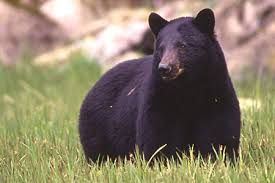
Copyright Joseph Anthony of the Wonder Child Blog


